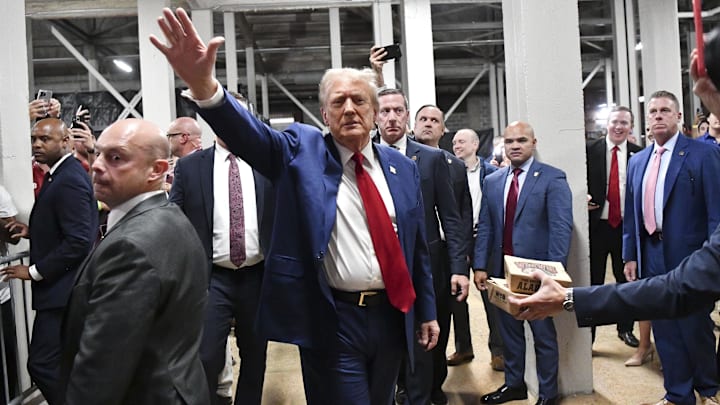Yesterday, the House vs. NCAA plaintiff attorneys and lawyers for the power conferences reached an agreement in the battle between the College Sports Commission and NIL collectives, an important step towards clarifying the legality of NIL payments in the post-settlement revenue-sharing era. Then, a day later, Donald Trump muddied the waters with an executive order aimed to “save college sports.”
The executive order runs counter to yesterday’s agreement, as one of the former’s main objectives is to prohibit “third-party, pay-for-play payments to collegiate athletes.” Clarifying that “This does not apply to legitimate, fair-market-value compensation that a third party provides to an athlete, such as for a brand endorsement.”
Donald Trump is attempting to smash NIL collectives
Many third-party NIL collectives, which were established to facilitate NIL payments to student-athletes at the advent of the NIL era, disbanded following the House vs. NCAA settlement because the settlement introduced direct pay-for-play from the school to the athlete with revenue-sharing, which in Year 1 is capped at $20.5 million.
However, some schools kept their collectives intact to circumvent the hard revenue-sharing cap by continuing to facilitate pay-for-play deals. Those deals were unilaterally denied by the clearinghouse that is run by Delloite and was established through the College Sports Commission, the enforcement arm of the House vs. NCAA settlement.
Then, sensing mounting legal pressure and hoping to avoid another loss in court over the legality of denying those deals, Wednesday’s agreement was reached, permitting payments from NIL collectives if they met the rest of the clearinghouses’ criteria, which applies to all NIL deals. Essentially, the agreement means that NIL collectives will be treated like any other business.
With NIL collectives allowed to continue operations, the hard revenue-sharing cap becomes more of a soft cap because schools could potentially get pay-for-play NIL deals approved and spend above the cap, assuming they’re able to raise the money through the collective to pay players.
This was good news for all athletes, not just football and basketball players, because collectives would be more likely to raise money for a highly-touted quarterback recruit than an elite athlete in an Olympic sport, so the quarterback recruit could take less or no revenue-sharing money, leaving more for the Olympic sport athlete. It does, however, threaten competitive balance in college sports, but when has that ever existed?
Now, Trump’s executive order threatens to destroy NIL collectives, but the catch is, it’s just an executive order. It has no legal backing or enforcement arm. It still has to be seen how this plays out and impacts the ongoing settlement agreements, but it will likely stir up more court cases, which the NCAA has consistently lost.
The NCAA’s dream all along has been an antitrust exemption, which it would have to get through Congress, so this could be a step in that direction.
